MEIRION BOWEN - Articles & Publications
In a class by themselves
EVEN IN A YEAR when the Bayreuth Festival provoked more criticism and more abuse than usual from those with jaded palates, it nevertheless achieved standards of production and execution that, to my mind, are in a class by themselves. It remains a unique experience, on levels both ephemeral and profound. The past is everywhere re-awakened. Seduction of a very old and romantic type you can find in the sound of the Valhalla motif, say, wafting through the trees as you stroll up towards the Festspielhaus at the close of an interval. The audience, too, are still predominantly a sort of Proustian museum discernibly, from their strong-limned faces, the descendants of a long line of aristocratic illegitimates. As ever, the local townspeople gather outside to gaze at them in feudal awe, and the policemen are wonderful.Inside the Festspielhaus, evocation of a past glory that long ago lost its grip. The late and still lamented Wieland Wag- ner saw to that, and his example looms large: his brother Wolfgang and other producers-designers have been hard put to it to maintain the same sense of in- dividual and exorable purpose, the same consistency of realisation. Wieland's 1951 Parsifal and 1962 Tristan have been re- tained in the repertory, and they are models of how to strip away descriptive, realistic elements in the sets, and other accretions to the drama, and substitute more symbolic conceptions that are closely linked to the music thus fulfilling the composer's original intentions. Parsifal (rehearsed by Peter Lehmann) was as im- pressive as ever, especially with Pierre Boulez as its conductor. Boulez's con- ception of the work matches Wieland Wagner's stage-realisation better than did that of any previous conductor. In a long and important essay on Parsifal in the programme, Boulez discusses its elaborate formal and musical language, and the need for the conductor to be aware of its constantly changing pace. He himself always ]et the music breathe, even in the second act, which he took at great speed with Debussian jeux de vagues effect. Parsifal had a reliable if not devastating cast, with James King in the title role, Franz Crass as Gurnemanz and Thomas Stewart as Amfortas. Gwyneth Jones, as Kundry, soured much of her music with quirky intonation and gratuitous howls and squawks.
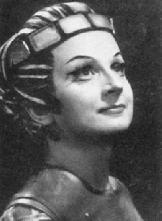
Tristan also had, in Karl Bohm, a conductor alert to the structural movement and sensuous richness of Wagner's score. He also seemed to bring out the best in Birgit Nilsson and Wolfgang Windgassen (in the title roles). The strength of Wieland Wagner's more controversial production, here again, with its simple, overtly phallic monoliths for each act, was that it concentrated the mind on the drama behind the music, its timeless, archetypal quality. Were he alive to produce it again, he might have caused a bigger stir, for not long before his death he was toying with the idea of having the second act done nude (it takes place at night, and in mediaeval times people slept naked). Perhaps Messrs Tynan & Co will find it a suitable object for Roundhouse rudery.
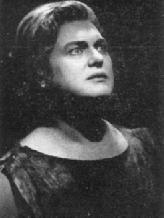
Wolfgang Wagner's new production of The Ring had no such ruthlessness or intensity. It steered a slightly uneasy course between symbolic and realistic conceptions. Overall, it follows the latest Bay- reuth practices by using a stage saucer that splits up and comes together again according to the progress of the drama. This is done with greater clarity than I have encountered before. The Ring is like a great Bildungsroman, a several-tiered novel in which our attention is focused on the 'education' of the principal characters, their early (relative) innocence and eventual enmeshment in crucial moral situa- tions and choices. With each new hero's or heroine's arrival, with each fresh possibility of the ring being returned to the Rhinemaidens from whom it was stolen, music and drama return to a state of repose, only to culminate again in tension and complication. This process is very evident from the basic set, and the lighting generally reinforces it. Das Rhein- gold started with lucid primary colours and a darkening and blurring occurred gradually. In Die Walkiire and Siegfried the smudgy expressionist background was slightly overdone, and too much gloom often hid the characters.
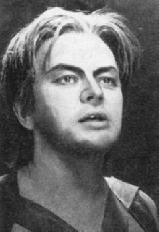
Details seemed to elude Wolfgang Wag- ner. Act I of Die Walkiire was so dark that the tree was almost invisible, and instead of a door opening to reveal light, the whole wall lit up at the end. There was little suggestion of a Rhine for the Rhinemaidens to swim in Act III of Gotterdiimmerung and no winding of the rope by the Norns in Act I. On the other hand, we had a curiously ammba- like Wurm or dragon; all the fights and killings-off were (as far as I recollect) botched; costumes that constantly evoked mirth especially the Valkyries, who, in peculiar striped trouser-suits, disported themselves more like debs at a Palace picnic. Moreover everyone commented on Briinnhilde's change of costume be- tween her going to sleep at the end of Valkiire and her awakening in Siegfried.
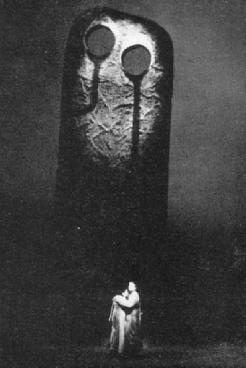
I was more irritated by the way Wolfgang Wagner chose to enclose his production within two ellipses, which was at times like watching a television performance; and abstraction gave way oddly to realism in the hall of Gibichungs, an actual room with ceiling and seats. His production of Die Meistersinger, incidentally, suffered from this curious cramping of the presentation (the opening of Act III, for instance), and from scrappy sets and gloomy lighting. In visual terms, at least, the true successor to Wieland Wagner at Bayreuth is Josef Svoboda, whose Dutchman is brilliant in managing a simple set and using lighting to an ultimate pitch of virtuosity, again giving the drama and music the degree of emphasis it deserves.
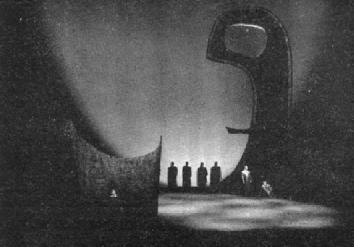
The trouble with Wolfgang Wagner's Ring was that one did not consistently feel this bond between the music-drama and its presentation, even though there were feats which only Bayreuth technicians could accomplish so well (for example, the final flood and transformation, with the riveting use of projections and fast-changing light).
The second cycle (which I saw) was well sung, on the whole. There was a superb Wotan in Theo Adam, who also sang a compelling Sachs in this year's Meistersinger. Berit Lindholm made a fair shot at Briinnhilde: she seemed strained in Walkiire and Siegfried, but rose to a pitch of great passion in Gotterdammerung. Her Siegfried was Jean Cox, who looked right and sings with musicianship, even if his tone was rather slender. The supporting roles were also generally well cast, with magnificent singing from Karl Ridderbusch as Fasolt and Gustav Neidlinger as Alberich. Helge Brilioth, too, was quite a find as Siegmund: eloquent and youthful-sounding, he was just the man for that role.
I have often wondered what perverse spirit inspired the choice of conductors at Bayreuth, fearing the worst from un- known names. Most often, such fears have proved groundless. Horst Stein, standing in for Lorin Maazel, in The Ring, gauged the flow of the lyrical passages effectively, but was inclined to speed up anywhere and everywhere. Nor did he get as well balanced a tutti sound from the orchestra as did, for instance, Hans Wallat in Die Meistersinger and Silvio Varviso in The Dutchman, let alone the languorous, poetic auality extracted by Boulez and Bohm. 1t is good, however, that Bayreuth is still a place where new blood is prominently featured, where experiment is encouraged. This would seem to me Wagner's notion of the place, at least in part or by implication. I hate museums, especially musical ones. Give me this Bayreuth any day, not Cosima's nor, come to think of it, Karajan's super-de-luxe Salzburg.
Top
